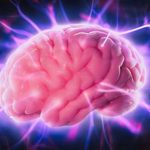
Don’t expect to sweat away the heart risks posed by sugary sodas and drinks, a new study warns. Canadian researchers found that even if the recommended 150 minutes of weekly physical activity protects against cardiovascular disease, it’s not enough to counter the adverse effects of sugar-sweetened beverages. “Physical activity reduces the risk of cardiovascular disease associated with sugar-sweetened beverages by half, but it does not fully eliminate it,” said researcher Jean-Philippe Drouin-Chartier, an assistant professor with Université Laval’s Faculty of Pharmacy in Quebec, said in a university news release. Researchers noted that sugar-sweetened drinks are the largest source of added sugars in the North American diet. For the study, they analyzed data on about 100,000 adults who were followed for an average of three decades. Those who consumed sugar-sweetened beverages more than twice a week had a higher risk of heart disease, regardless of their physical activity levels. With daily consumption, the risk of heart disease is even higher, researchers noted. Drouin-Chartier noted that the sugary drinks in the study included sodas, lemonade and fruit cocktails. The study didn’t specifically consider energy drinks, but those also tend to contain heavy doses of sugar. Artificially sweetened drinks were not associated with higher risk of heart disease, the researchers found. “Replacing sugar-sweetened beverages by diet drinks is good, because it reduces the amount of sugar. But the… read on > read on >


































-300x200.jpg)



